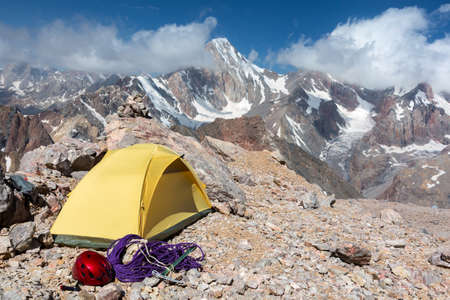1. Understanding the Human Footprint on Trails
When we head out for a hike, it’s easy to feel like we’re simply enjoying nature without making much of a mark. However, even the most careful hikers leave an impact on the environment, especially in America’s diverse wilderness areas. The effects go beyond just footprints on a trail—they can change the soil, harm plants, and disturb wildlife.
How Hiking Impacts Soil
Every step we take compacts the ground beneath our feet. Over time, heavily used trails become packed down and lose their natural ability to absorb water. This leads to erosion, where soil washes away during rainstorms, sometimes ending up in rivers and streams. Erosion not only changes how trails look but also affects plant growth and water quality.
| Soil Impact | Result |
|---|---|
| Compaction | Less water absorption, harder for roots to grow |
| Erosion | Loss of topsoil, muddy trails, sediment in waterways |
Effects on Vegetation
Plants along trails are often trampled by boots or crushed when people step off established paths to avoid mud or get a better view. Some native plants are slow to recover after being damaged. In popular parks and wilderness areas across the U.S., sensitive wildflowers and grasses can disappear from overuse, changing the look and health of the landscape.
Common Issues for Plants Near Trails:
- Trampling reduces plant cover
- Roots become exposed and dry out
- Non-native species may invade disturbed areas
Disturbing Wildlife in American Wilderness Areas
The presence of humans can scare animals away from their homes or feeding grounds. Even quiet hikers may cause birds to abandon nests or mammals to hide more often, using up valuable energy reserves. In some cases, repeated human contact makes wildlife less cautious, which can lead to dangerous encounters or animals relying on people for food.
| Wildlife Impact | Description |
|---|---|
| Nesting Disturbance | Birds may abandon eggs or chicks if startled too often by hikers. |
| Habitat Avoidance | Mammals might avoid good habitats near busy trails, limiting their food sources. |
| Food Conditioning | Animals that find snacks from hikers may start approaching people for food. |
Why It Matters: Protecting America’s Wild Places Together
Understanding our impact is the first step in protecting America’s wild places. By recognizing how our actions affect soil, vegetation, and wildlife—even when we mean well—we can make choices that help keep nature healthy for everyone who comes after us.
2. What is Leave No Trace?
The Origins of Leave No Trace
The Leave No Trace (LNT) principles started in the 1960s and 70s, when more people began enjoying America’s wild places. As hiking and camping grew in popularity, so did the negative impact on natural areas—trampled plants, piles of trash, and disturbed wildlife became common sights. In response, land management agencies like the U.S. Forest Service and National Park Service teamed up with organizations such as the Leave No Trace Center for Outdoor Ethics to create clear guidelines for outdoor behavior.
Why Leave No Trace Matters
Leave No Trace isn’t just about picking up your trash—it’s a set of seven principles designed to help everyone minimize their environmental footprint while enjoying the outdoors. These guidelines are now deeply rooted in American outdoor culture and have become an essential part of how hikers, campers, and other nature lovers act responsibly on public lands.
The Seven Principles of Leave No Trace
| Principle | Description |
|---|---|
| Plan Ahead and Prepare | Know where you’re going, what to expect, and what you’ll need. Being prepared helps avoid accidents and unnecessary damage. |
| Travel and Camp on Durable Surfaces | Stick to marked trails and established campsites to prevent trampling vegetation and soil erosion. |
| Dispose of Waste Properly | Pack out all trash, leftover food, and litter—even biodegradable items like orange peels or sunflower seeds. |
| Leave What You Find | Preserve nature by not picking flowers, moving rocks, or taking souvenirs home. |
| Minimize Campfire Impact | Use a camp stove if possible. If fires are allowed, keep them small and only use existing fire rings. |
| Respect Wildlife | Observe animals from a distance; don’t feed or approach them for photos. |
| Be Considerate of Other Visitors | Keep noise down, yield to others on the trail, and respect everyone’s outdoor experience. |
How LNT Shapes Outdoor Culture in the U.S.
LNT principles have become a cornerstone of outdoor ethics across America. From school field trips to guided tours in national parks, these ideas are taught everywhere people interact with nature. Many hiking groups, park rangers, and even outdoor gear companies promote Leave No Trace as a way to protect America’s wild spaces for future generations. By following these simple rules, everyone can help ensure that beautiful trails and wild landscapes stay healthy and accessible for years to come.

3. Common Environmental Challenges on U.S. Hiking Trails
Trail Erosion
One of the biggest environmental issues hikers notice across the United States is trail erosion. When people walk off established paths, or when trails are poorly maintained, soil can get loose and wash away during rainstorms. This doesn’t just make trails harder to hike; it also damages plant roots and changes how water flows in the area.
Trail Erosion Facts
| Cause | Impact |
|---|---|
| Walking off-trail | Destroys vegetation, increases soil loss |
| Poor drainage | Leads to muddy trails and more erosion |
| Heavy foot traffic | Widens trails, exposes roots and rocks |
Litter and Trash Left Behind
Litter is a visible problem on many popular hiking routes. Even small items like food wrappers, water bottles, or fruit peels take years to break down and can harm animals that try to eat them. Trash ruins the natural beauty that hikers come to enjoy and creates extra work for park rangers and volunteers who help clean up.
Introduction of Invasive Species
Invasive plants and animals can hitch a ride on your boots, clothes, or gear. When these non-native species get into American wilderness areas, they often outcompete native plants and upset the balance of local ecosystems. For example, seeds from invasive plants stuck to your socks may spread along trails and quickly take over an area.
How Invasive Species Spread on Trails
- Seeds attached to boots or pets fur
- Mud containing plant material moved from one area to another
- Packing in firewood or other natural materials from outside the area
Disturbance to Wildlife
The presence of hikers can disturb wildlife, especially if people approach too closely or leave food behind. Animals might change their behavior—like avoiding good feeding spots—or become used to human food, which can be dangerous for both wildlife and people.
Common Wildlife Disturbances Caused by Hikers
| Action by Hiker | Effect on Wildlife |
|---|---|
| Feeding animals (even unintentionally) | Makes wildlife dependent on humans, leads to risky encounters |
| Loud noises or sudden movement | Startles animals, disrupts nesting or feeding patterns |
| Leaving food scraps behind | Attracts animals, alters natural diets, increases conflict risk |
The environmental challenges facing America’s hiking trails show just how important it is for everyone to follow Leave No Trace principles whenever they head outdoors.
4. Practicing Leave No Trace: A Hiker’s Guide
What Does “Leave No Trace” Really Mean?
“Leave No Trace” is more than just a slogan; it’s a set of principles that help protect America’s wild places for everyone to enjoy. Whether you’re exploring the Rockies, hiking in the Pacific Northwest, or walking the Appalachian Trail, these habits make a real difference.
Simple Tips for Responsible Hiking
| Tip | What It Means | Real-World Example |
|---|---|---|
| Pack It In, Pack It Out | Carry out everything you bring, including food wrappers and toilet paper. | If you snack on granola bars, put empty wrappers back in your backpack instead of leaving them behind. |
| Stay on Marked Trails | Avoid creating new paths that can damage plants and cause erosion. | Even if a shortcut looks tempting, stick to the official trail signs at places like Yosemite or Shenandoah National Park. |
| Respect Wildlife | Observe animals from a distance and never feed them. | If you spot a deer or chipmunk, take photos from afar and keep your food securely packed away. |
| Leave What You Find | Don’t pick flowers or take rocks as souvenirs. | If you see a unique wildflower or interesting rock formation, snap a picture instead of taking it home. |
| Dispose of Waste Properly | Bury human waste 6-8 inches deep at least 200 feet from water sources. | When hiking in the Grand Canyon, use restroom facilities where available or follow local guidelines for digging a “cathole.” |
| Be Considerate of Others | Keep noise down and yield to other hikers on narrow trails. | If you’re hiking with friends in the Smokies, talk quietly and step aside for uphill hikers. |
The American Outdoor Ethos in Action
Across the United States, outdoor enthusiasts are proud stewards of public lands. Hikers in Colorado carry reusable water bottles instead of single-use plastics. Trail volunteers in Oregon organize regular cleanups. Families visiting national parks teach kids to respect nature by picking up litter they find—even if it’s not theirs. These everyday actions reflect a shared belief: preserving nature is everyone’s responsibility.
Quick Reminders Before You Hit the Trail:
- Check local regulations: Some areas have special rules about pets, fires, or camping—always look for posted signs.
- Avoid loud music: Let the sounds of nature be your soundtrack so everyone can enjoy the peace and quiet.
- Plan ahead: Know your route, pack essentials (like trash bags), and research any sensitive habitats along your hike.
Your Choices Matter!
Every hiker has an impact. By following Leave No Trace principles, you help keep America’s trails beautiful—for yourself, for wildlife, and for future generations. Happy hiking!
5. Why Every Hiker’s Choices Matter
The Power of One: How Individual Actions Add Up
Every time you hit the trail, your choices—big or small—make a difference. It might seem like tossing one apple core, stepping off the path, or picking a wildflower doesn’t matter much. But when thousands of hikers make similar decisions, the results add up quickly. The truth is, our favorite trails and parks see millions of visitors each year across America. If each person leaves even a tiny mark behind, it can lead to big problems for wildlife, plants, and even other people’s experiences.
Individual vs. Collective Impact Table
| Action | If 1 Hiker Does It | If 1,000 Hikers Do It |
|---|---|---|
| Leaves trash on trail | One piece of litter | A mountain of garbage harming animals & scenery |
| Picks wildflowers | One flower missing | No flowers left for others or pollinators |
| Cuts switchbacks | Small shortcut in the dirt | Erosion damaging whole hillsides |
| Makes loud noise/music | Disturbs some wildlife | No peace for nature or fellow hikers |
The Role of Community in Protecting Trails
It’s not just about what you do—it’s also about encouraging those around you to care. When hiking groups and communities talk about Leave No Trace (LNT), share tips online, or help pick up litter, they set a positive example. Outdoor clubs, scout troops, and families can all become powerful forces for good by spreading LNT values. This sense of community responsibility keeps America’s trails beautiful and accessible for everyone.
How Communities Can Make a Difference:
- Organize local clean-up days at popular parks and trails.
- Share LNT principles at meetups and on social media.
- Support rangers and park staff by following posted guidelines.
- Mentor new hikers about respecting nature from day one.
Safeguarding America’s Outdoor Treasures for Future Generations
The United States is home to incredible natural wonders—from Yellowstone to the Appalachian Trail and countless state parks in between. These places are national treasures that belong to everyone now and in the future. By embracing Leave No Trace every time we venture outdoors, we help ensure that our children and grandchildren will also get to experience wildflowers blooming in spring, clear mountain streams, and peaceful forests teeming with wildlife. Every hiker’s choice matters because together, we protect what makes America’s outdoors so special.


